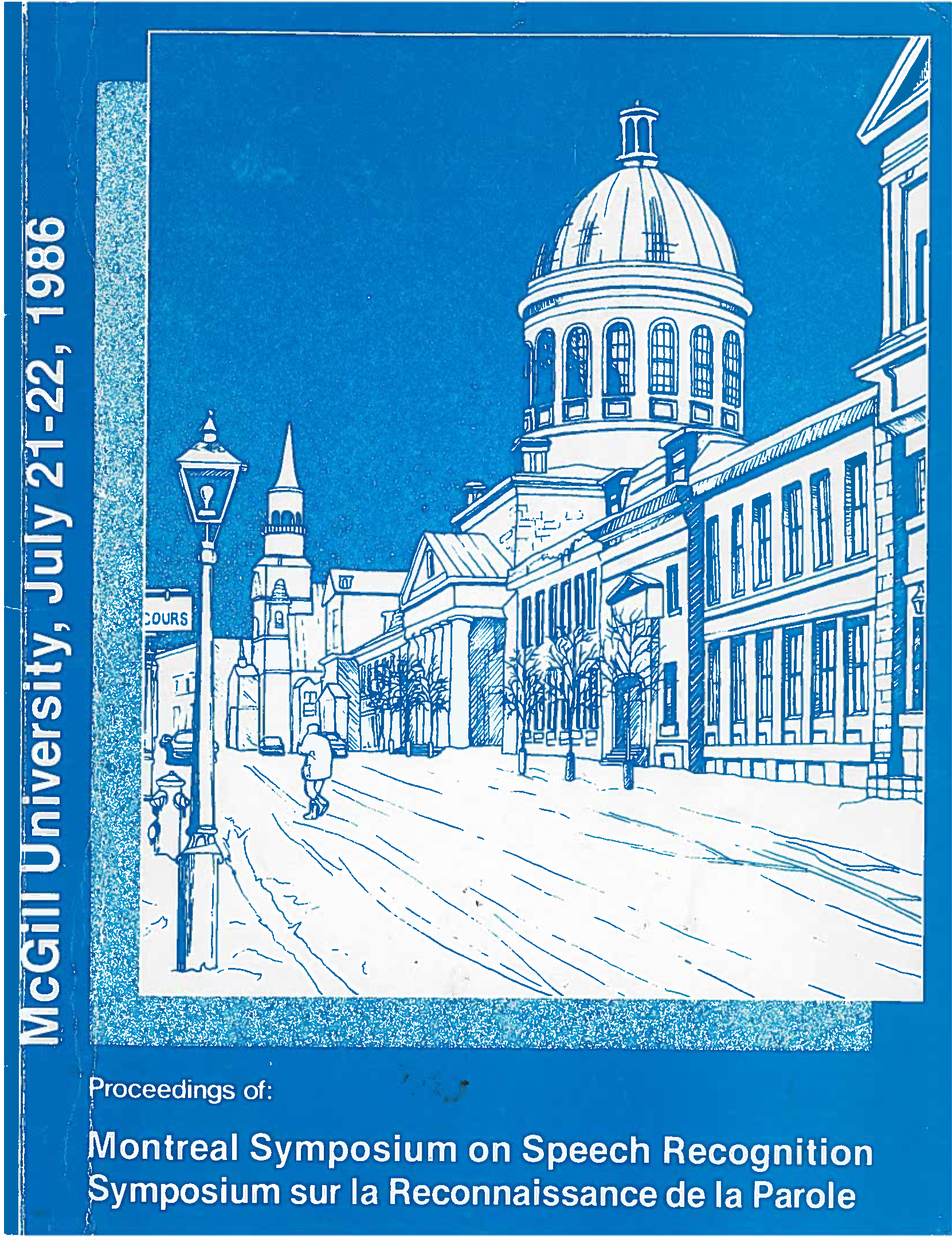Syllable Network for Phonemic Decoding of Speech
Abstract
The decoding of speech into phonemes for large vocabulary speech recognition is made more reliable by restricting phoneme sequences to those which compose valid syllables. To apply this restriction when decoding a sequence of phonemes, we use a syllable network representing the valid syllables in Webster’s 7th Collegiate dictionary. Since major allophonic variants of a phoneme are determined by the phoneme's position within the syllable (e.g., prevocalic vs. postvocalic /r /), the syllable network can be used to represent allophonic variation by employing distinct allophone models of a phoneme in different positions within the network. A preliminary experiment using the syllable network in large vocabulary recognition to select appropriate Markov models for allophones shows promising results.
Additional Files
Published
How to Cite
Issue
Section
License
Author Licensing Addendum
This Licensing Addendum ("Addendum") is entered into between the undersigned Author(s) and Canadian Acoustics journal published by the Canadian Acoustical Association (hereinafter referred to as the "Publisher"). The Author(s) and the Publisher agree as follows:
-
Retained Rights: The Author(s) retain(s) the following rights:
- The right to reproduce, distribute, and publicly display the Work on the Author's personal website or the website of the Author's institution.
- The right to use the Work in the Author's teaching activities and presentations.
- The right to include the Work in a compilation for the Author's personal use, not for sale.
-
Grant of License: The Author(s) grant(s) to the Publisher a worldwide exclusive license to publish, reproduce, distribute, and display the Work in Canadian Acoustics and any other formats and media deemed appropriate by the Publisher.
-
Attribution: The Publisher agrees to include proper attribution to the Author(s) in all publications and reproductions of the Work.
-
No Conflict: This Addendum is intended to be in harmony with, and not in conflict with, the terms and conditions of the original agreement entered into between the Author(s) and the Publisher.
-
Copyright Clause: Copyright on articles is held by the Author(s). The corresponding Author has the right to grant on behalf of all Authors and does grant on behalf of all Authors, a worldwide exclusive license to the Publisher and its licensees in perpetuity, in all forms, formats, and media (whether known now or created in the future), including but not limited to the rights to publish, reproduce, distribute, display, store, translate, create adaptations, reprints, include within collections, and create summaries, extracts, and/or abstracts of the Contribution.


